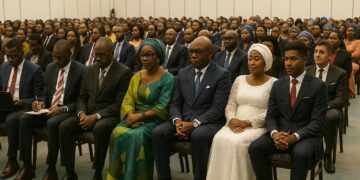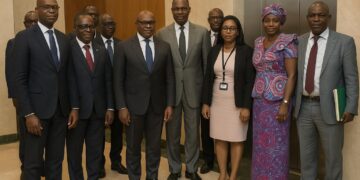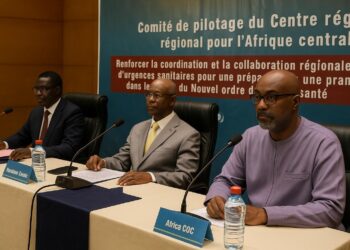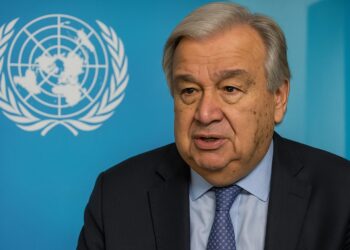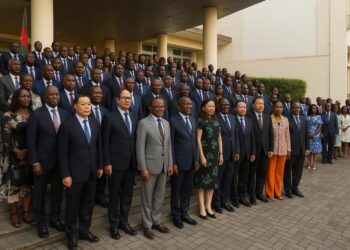A Classic Revisited
First printed in Paris by Anthropos, the 500-page volume Histoire économique du Congo 1880-1968, co-authored by renowned macro-economists Samir Amin and Catherine Coquery-Vidrovitch, continues to attract analysts searching for the structural explanations behind Congo-Brazzaville’s recurrent growth surges and sudden plateaus.
More than a simple chronicle, the book dissects eight decades of colonial and early post-independence policies, identifying how concessionary regimes, export specialisation and centralised public finance created both the industrial embryo and the persistent bottlenecks still observed in today’s forestry, mining and agricultural value chains.
Colonial Concessionary Era 1880-1920
Amin and Coquery-Vidrovitch trace Congo’s insertion into the world economy to the Berlin partition, when vast resource blocs were leased to private companies in return for modest royalty schemes. The model favoured quick extraction over local accumulation, embedding a pattern of capital outflow and limited wage employment.
Rivers became export corridors, while inland villages served as labour reservoirs. Although the authors recognise sporadic infrastructure investments, they argue that rails and ports primarily served timber and rubber flows bound for Marseille and Bordeaux, leaving internal markets fragmented and consumers dependent on costly imported manufactures.
Export Growth Without Linkages 1920-1958
The inter-war reform of 1920 substituted direct state control for concessionary monopolies, yet production targets remained externally set. Forestry, cocoa and palm-oil output accelerated under new quotas, but little processing occurred domestically, perpetuating the narrow fiscal base and reinforcing Brazzaville’s reliance on customs revenue.
Amin points out that colonial administrators encouraged smallholder schemes alongside company estates, but extension services focused on quantity rather than productivity. Consequently, export volumes rose while rural living standards lagged, sowing the seeds of later debates on equitable land taxation and cooperative credit.
Independence and Continuity 1960-1968
Independence in 1960 ushered in a nationalist budget, yet the authors observe that financing instruments changed less than political slogans. External trade still provided over two-thirds of fiscal receipts, and public investment programmes relied on Paris-negotiated overdrafts rather than domestic savings or syndicated loans.
The 1963-1968 five-year plan sought industrial autonomy through state-led lumber mills and agro-processing plants. However, persistent foreign exchange leakages and high capital-output ratios constrained scale. As Coquery-Vidrovitch notes, the absence of diversified tax instruments limited the government’s ability to cushion commodity price swings.
Regional Parallels Across UDEAC
The study extends beyond Congo, comparing experiences across the nascent Union Douanière et Économique d’Afrique Centrale. Cameroon’s cocoa boom, Gabon’s manganese rush and Chad’s cotton frontier followed similar extraction-first logics, reinforcing the impression that individual policy choices mattered less than the inherited macro-structure.
Amin stresses that regional customs arrangements, far from redistributing revenue, mainly institutionalised the outward flow of surplus toward metropolitan markets. Tariff alignment facilitated company logistics but offered limited stimulus for cross-border manufacturing clusters that could have deepened supply chains within Central Africa.
Lessons for Today’s Investors
Re-reading the volume through a contemporary lens reveals three enduring signals for investors. First, Congo’s abundant factor endowment has never been the constraint; rather, the speed at which capital leaves the value chain remains critical to project bankability and sovereign credit metrics.
Second, the authors show that infrastructure built for export corridors can be repurposed. Upgrading legacy railways toward multimodal platforms could widen domestic market catchment areas, reduce import parity prices and support the diversification objectives outlined in recent National Development Plans.
Third, fiscal instruments anchored in production rather than customs appear decisive. The colonial experience emphasised royalties and import duties; the post-colonial phase leaned on export taxes. Contemporary reforms that broaden value-added and land taxes may generate less volatile revenue streams while nurturing competitive supply bases.
Importantly, Amin and Coquery-Vidrovitch avoid attributing under-development to governance choices alone. They argue that path-dependent structures can be reoriented, provided policymakers sequence incentives correctly and crowd in long-term capital rather than short-cycle trading finance.
For the international reader, the book’s meticulous data tables, many derived from colonial archives, underscore the continuity between pre-independence extractive ratios and today’s current-account patterns. As such, it remains indispensable background for lenders evaluating sovereign bonds or corporates designing downstream timber, cocoa or fertiliser ventures.
Half a century after its publication horizon, Histoire économique du Congo 1880-1968 still prompts the central policy question: how can Congo-Brazzaville transform structural abundance into inclusive prosperity? The authors’ disciplined historical lens reminds decision-makers that durable answers lie in institutions capable of retaining value at home.
A new generation of entrepreneurs in Pointe-Noire and Oyo increasingly references the book to justify joint ventures that integrate logging with plywood, ethanol or biomass energy. Their argument mirrors the authors’ thesis: retaining a bigger slice of the value chain mitigates both price risk and currency mismatch.
Diplomats interviewed at recent Central African Economic Conferences also cite the study when promoting regional industrial parks, noting that a historical grasp of concessions helps negotiators craft balanced clauses on local sourcing, tax holidays and technology transfer. In that sense, scholarship continues to inform pragmatic deal-making.








